Vladi S. Travkin, 
 Natalya N. Bolotina
Natalya N. Bolotina 

The Annals of Exploratory Science
Vladi S. Travkin, 
 Natalya N. Bolotina
Natalya N. Bolotina 


 Hierarchical Scaled Physics and Technologies (HSPT), Rheinbach, Germany,
Denver, CO, USA
Hierarchical Scaled Physics and Technologies (HSPT), Rheinbach, Germany,
Denver, CO, USA

 University of Applied Sciences, Rheinbach, Germany
University of Applied Sciences, Rheinbach, Germany
up to
INTRODUCTION
We present here the new physics of structured water molecule and consequences of this huge renovation of the second most important substance for life and functions on earth.
Discovered by Ph.M. Kanarev the physics of chemical element atoms built on structure of their nuclei, and spatial structure of chemical elements nuclei composed of protons and neutrons as of again structural particles is changing most of the physics and chemistry.
This groundbreaking vision so far seems is the only correct one in explanation of the sub-atomic and atomic physics phenomena. The old one point of view (in COHP - Conventional Orthodox Homogeneous Physics) that atoms and nuclei of chemical elements have planetary weird (poorly imagined) model for atoms and simply unstructured nuclei - when the just bunches of closely free packed protons (despite of electrostatic repulsion forces) and neutrons play a role of the nucleus?
These images below are supposed to be of nuclei ?
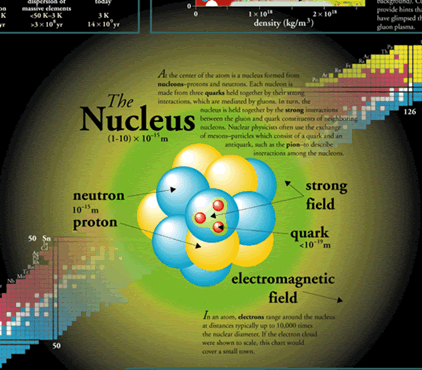
http://www.lbl.gov/abc/wallchart/index.html; How the "strong" field "interaction" is CHANGING ITSELF further apart of the nucleus to the Electromagnetic Fields? Can anyone answer? And, by the way -- What are the electromagnetic fields here -- inside of the atom? What does them to appear?
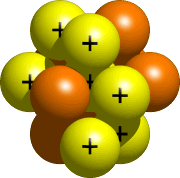
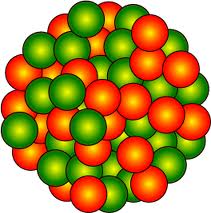
http://education.jlab.org and http://laurent-planells.com
Well, then the next is - How these supposed to be "nuclei" are interacting really with their electrons and neighboring atoms? Only with a theory and equations. No QM, please mentioning. It's irrelevant.
The structured presentation of nuclei, atoms and molecules - not as the packs above, that up scaled hierarchically into the medium of chemical elements fundamentally changes our knowledge of anything in physics itself and chemistry altogether with biology.
That is concerning also our subject in the field of water along with the water tied technologies.
Now, standing on the point of view that atoms of hydrogen, oxygen, their isotopes, and molecules of water and of its structural modifications are all have quite different than the taught (and continued in teaching) just recently in chemistry and physics models of these constituents we must reconstruct and we have already reconstructed, following already on hand developments of Ph.M.Kanarev and hierarchical methods of HSP-VAT, our ideas and formats regarding the water physics and chemistry.
We start the new physics of structured water with the hydrogen and its isotopes. In the above sub-section on hydrogen atomic physics - "Hydrogen in HSP-VAT",
we have some more information on isotopes of H and physics of hydrogen based substances.
Right now and here we are mostly interested in hydrogen atoms and molecules regarding the water compounds as structured scaled substances.
The hydrogen's nuclides presented as the structures of electromagnetic
volumetric particles altogether with filling the space aether completely
changes our ways of treatment, understanding and physical modeling of these
interacting particles and of their ensembles - the molecules and sample
volume of substances - hydrogen, oxygen and water types. Hydrogen

 H,
deuterium
H,
deuterium

 H,
tritium
H,
tritium

 H,
Oxygen-16, -17, -18 as well as their role in
H
H,
Oxygen-16, -17, -18 as well as their role in
H
 O
molecule and of its types.
O
molecule and of its types.
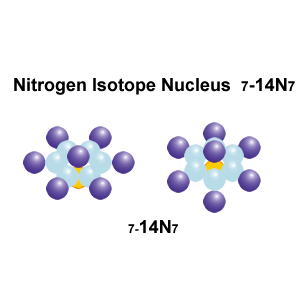
Real Nitrogen N14 Isotope Nucleus, not as in COHP image above.
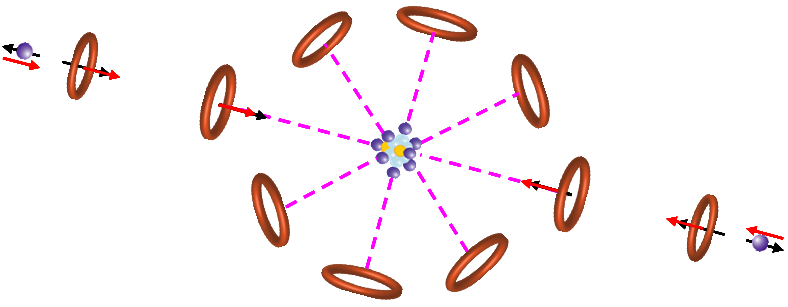
Water Molecule one of structures, definitely not as in COHP draw and call them "structured" - see below.
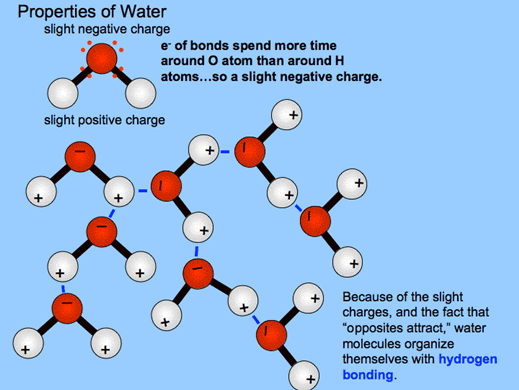
These are not the Water Molecules drawn, and definitely not "structured" ones as in COHP workers started to name them as "structured."
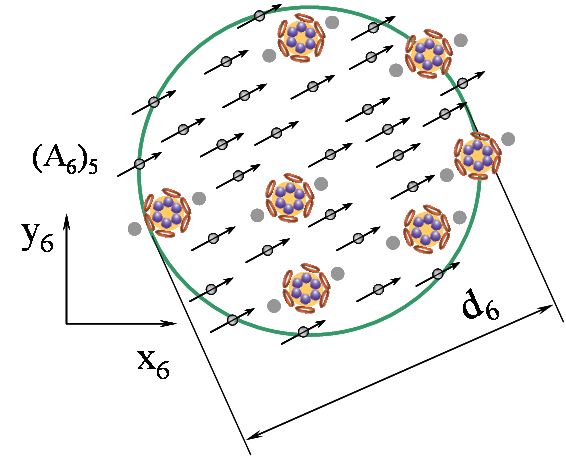
Volume of Water magnetized. This is the drawing that is a half-COHP one because the drawings of electrons have been done as in COHP do. We did this on purpose.
Nevertheless, professionals and students NEVER can see in COHP texts, books, articles this kind of volume of a substance that supposed to be averaged for the Upper (bulk) scale - of Continuum could be.
Why not? Because in COHP physicists, biologists, chemists, other professionals do know that it is not allowed to intersect the objects, particles, phases inside of the Averaging Volume by the external surrounding surface of that volume. The theorem of Gauss-Ostrogradsky (GO) does not allow this to do.
That is why organized university orthodox physicists can not do the correct averaging, determination of the bulk properties as, for example, of Continuum scale, other tasks. They follow this GO theorem, should obey to it.
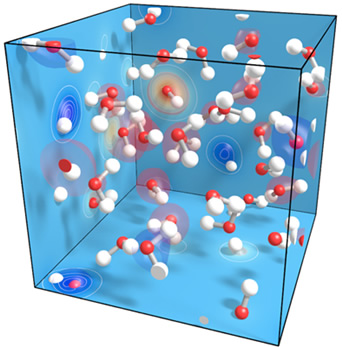
Some graphical designers can do the inadequate thing of intersecting of objects in COHP as in this picture, but that is because of illiteracy. COHP has no methods for calculating these phenomena, problems. That is why they (COHP physicists) simplify the treatment of Heterogeneous problems to the Homogeneous media physics, as was done first in the XVIII century.
When the Heterogeneous media as, for example, in this aqueous bio-solution with the presence of macromolecules (myoglobin, shown not on scale)
is under investigation, treatment, study in physics, biophysics, then the very different HS physics and math should be applied. Well, but that is the whole new path of physics.
A kind of initial knowledge base for this development has been published in our -
and in references below. A lot of reading - we think it worth of studying, our readers will not get this stuff anywhere else. Unfortunately, the orthodox organised physics is not happy with this teaching in the well established universities. M.Planck was right on that.
Professor Ph.M. Kanarev got it for a singular events, one scale, but his are the brilliant advancements. There are a few other pioneers in sub-atomic, particle physics that we are referring at. Meanwhile, we do the 3P - Polyscale, Polyphase, Polyphysics development.
1. Kanarev, Ph.M., "A Model for the Free Electron," Galilean Electrodynamics, Vol. 13, No. S1, pp. 15-18, (2002)
2. Kanarev, Ph.M., Photon, http://www.micro-world.su/ Folder "Books"; retrieved 05/05/2013
3. Kanarev, Ph.M., Nuclei of Atoms, http://www.micro-world.su/ Folder "Books"; retrieved 05/05/2013
4. Kanarev, Ph.M., Answers to Microworld Questions, http://www.micro-world.su/ Folder "Answers"; retrieved 05/05/2013
5. Kanarev, Ph.M., Introduction to New Electrodynamics. http://www.micro-world.su/ Folder "Books"; retrieved 05/05/2013
6. Kanarev, Ph.M. , The Foundations of Physchemistry of Microworld. Monograph. The 15th edition, http://www.micro-world.su/index.php/2010-12-22-11-45-21/139--i; retrieved 05/05/2013
7. Travkin, V.S. and Bolotina, N.N., "The Classical and Sub-Atomic Physics are the Same Physics," http://travkin-hspt.com/parphys/pdf/51_PrAtEd-QM-Ref-2HSPT.pdf
8. Travkin, V.S., Electrodynamics 2 - Elements 3P (Polyphase-Polyscale-Polyphysics), http://travkin-hspt.com/eldyn2/index.htm, (2013)
9. Travkin, V.S. and Bolotina, N.N., "Quantum Chemistry, Physical Chemistry, Molecular Dynamics Simulation, DFT (Density Functional Theory), and Coarse-Graining Techniques Applied in Structural, Cellular Biology, Polymer Science and Implication for Scaleportation," Journal of Alternative Energy and Ecology, No. 2, pp. 58-75, (2011a)
10. Travkin, V.S. and Bolotina, N.N., "Pseudo-Scaled and Scaled Description and Scaleportation of Inorganic and Organic Polymer and Polymer Composites Properties," Journal of Alternative Energy and Ecology, No. 1, pp. 62-77, (2011b)
11. Travkin, V.S. and and Bolotina, N.N., "Hydrogen in HSP-VAT. Introduction," http://travkin-hspt.com/parphys2/abstracts/hydrogen-ab.htm
12. Travkin, V.S. and and Bolotina, N.N., "Iron. Introduction," http://travkin-hspt.com/parphys2/abstracts/iron-ab.htm
13. Travkin, V.S. and Catton, I., Transport Phenomena in Heterogeneous Media Based on Volume Averaging Theory, in Advances in Heat Transfer, Academic Press, New York, Vol. 34, pp.1-144, (2001)
14. Travkin, V.S., Statistical Mechanics Homogeneous for Point Particles. What Objects it Articulates? http://travkin-hspt.com/statmech/index.htm, (2014)
15. Travkin, V.S., Solid State Polyscale Physics. Fundamentals, http://travkin-hspt.com/solphys/index.htm, (2014)
=========================================================================================Any information displayed here is the proprietary information in the area of "Water Structured. Introduction."
This is also the well known problem - still can not be solved within the Homogeneous One-Scale Chemical physics, or particle physics.
![]()

![]()